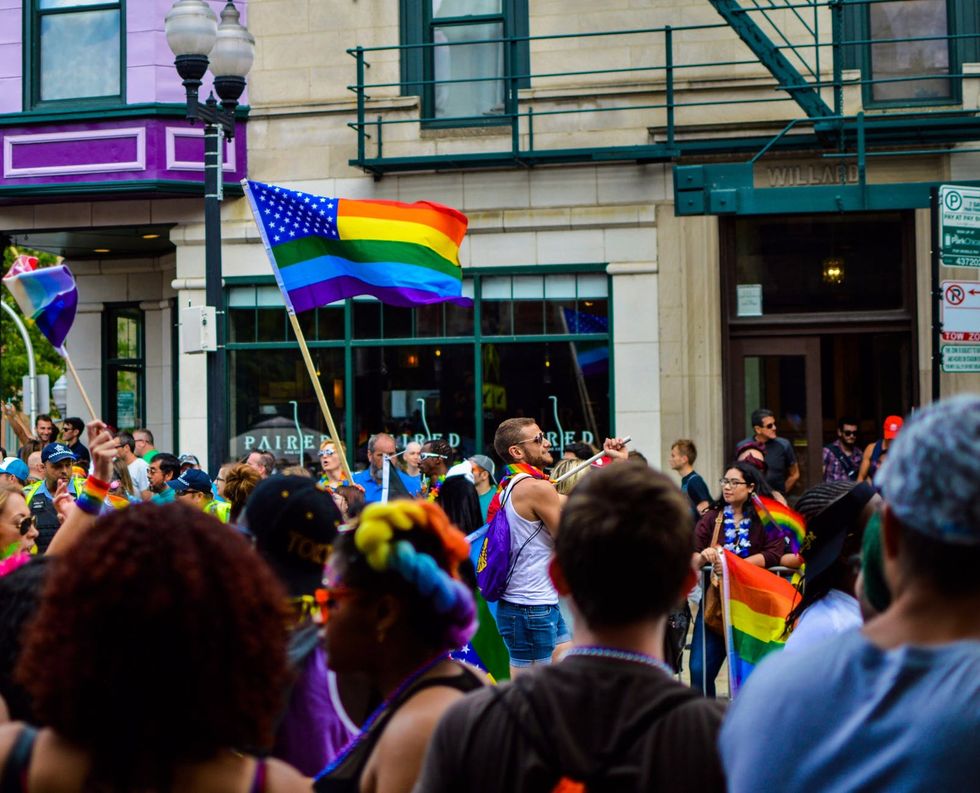Many people struggle to figure out their "label" attached to their sexuality. It's hard to navigate when the most prominent sexualities are either on extreme ends of the spectrum or dead in the middle. Sexuality is usually seen as a binary -- strictly heterosexual or strictly homosexual, and this is just not the case. There are TONS of sexualities out there, and many branches of those! So rather than thinking of it as a binary, we should think of sexuality on a spectrum instead. Let me explain.
"Out with the Old" -- The Kinsey Scale

For a long time, The Kinsey Scale was one of the methods people used to explain their sexuality to other people. However, this scale is flawed in many ways. Most prominently, it assumes that sexuality only goes from variations of heterosexuality to homosexuality, and very little in between. It leaves out asexual and graysexual orientations (individuals who either experience little to no sexual attraction or will only experience it on occasion).
Next, It leaves out pansexual people and those that identify as non-binary. Although no scale is going to be absolutely perfect, it's essential to include some more inclusive identifications to fit more people.
Lastly, The Kinsey Scale states that it's based on sexual behavior -- and sexual behavior does not equal sexual orientation. One can be attracted to an exclusive sex and still decide to perform sexual acts with another sex. Happens all the time.
"In with the New" -- The Purple-Red Scale
While the Purple-Red scale still isn't the BEST way to explain sexual orientation, it definitely goes a lot farther than previous methods. While not only offering levels of attraction stemming from heterosexual to homosexual, it also cross-references sexual orientation (based on sex) with attraction types stemming from asexual (no sexual attraction) to hypersexual (sexual attraction being the main focus of a relationship).
This system is inherently more successful for determining where you stand on the sexuality spectrum because it includes many more options to choose from.
Could it be a bit more inclusive? Absolutely. It still doesn't account for those who are pansexual or non-binary, but the fact that it's a step closer in the right direction is what we're striving for.
Why is this Important?
Sexuality can oftentimes be confusing for both the individual and the person they're attempting to explain their attraction to. We've been so ingrained to believe that sexual attraction is either heterosexual or homosexual, and that bisexuality is just someone who's confused between the two.
This is simply not true.
Attraction can come in many different forms. An individual may consider themselves bisexual but have a stronger attraction to men than women, or vice versa. An individual could be sexually attracted to all sexes and genders or none at all. It's a case-by-case basis and should be treated as such.
An individual may experience sexual attraction only after having a strong bond of friendship with the other person (this is called demisexuality and no, this isn't just having higher standards). An individual may never experience sexual attraction in their lifetime but can still fall in love with someone and emotionally support them (this is called asexuality while the person still has romatic attraction). An individual could never fall in love romantically but be sexually attracted and active with many people. It's possible.
Sexual attraction is something that happens in the brain and triggers a physiological response. And that's the difference between sexual attraction and sexual behavior. Sexual attraction is not a choice. Sexual behavior is. There is a stark difference. The point is, sexuality is fluid. It is a spectrum of attraction that no one can map out exactly. It is not a binary. It is not one-and-done. It is not a switch that you can turn on and off. It's important that we bring awareness to the different levels of sexuality so that it can be better understood and appreciated.











